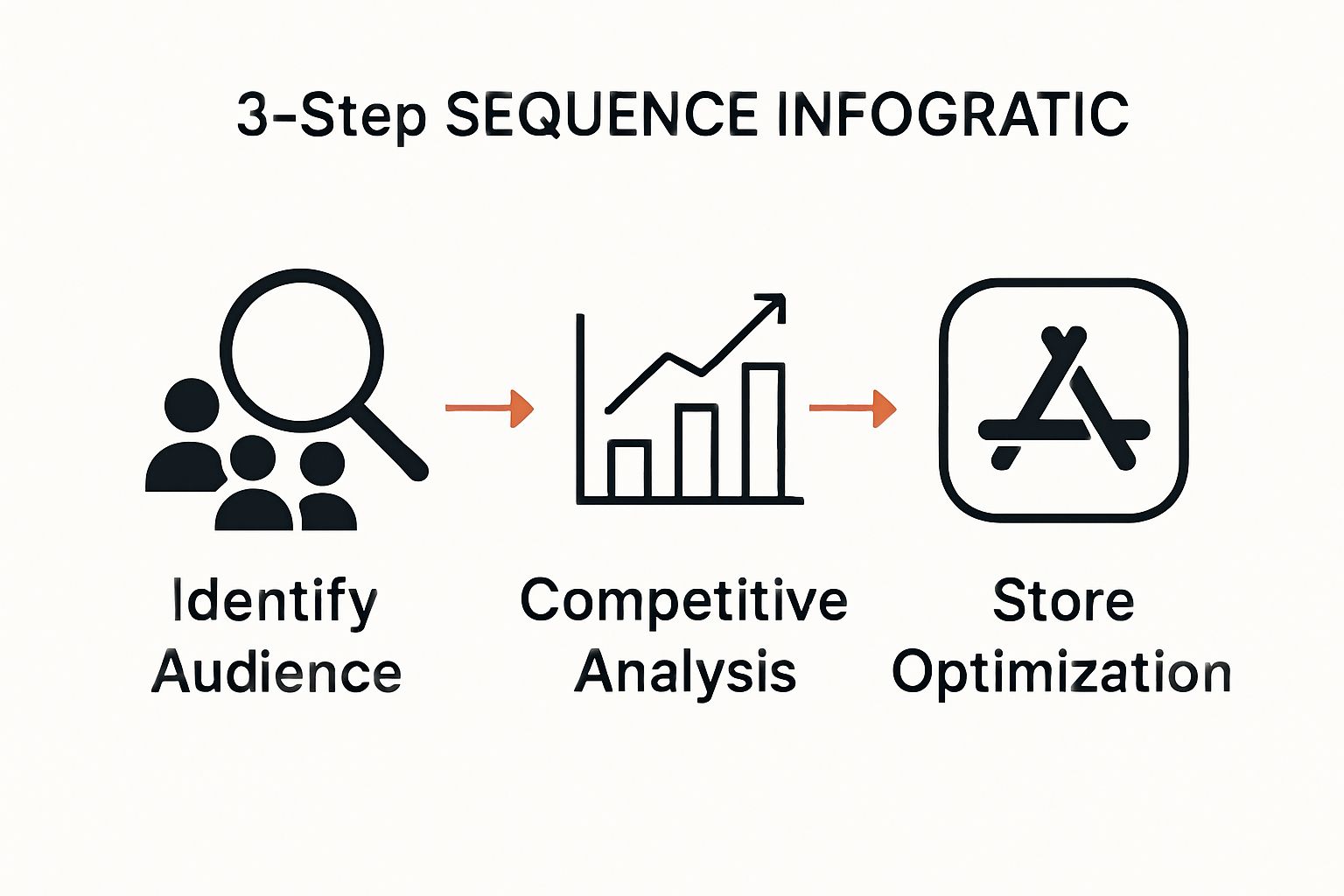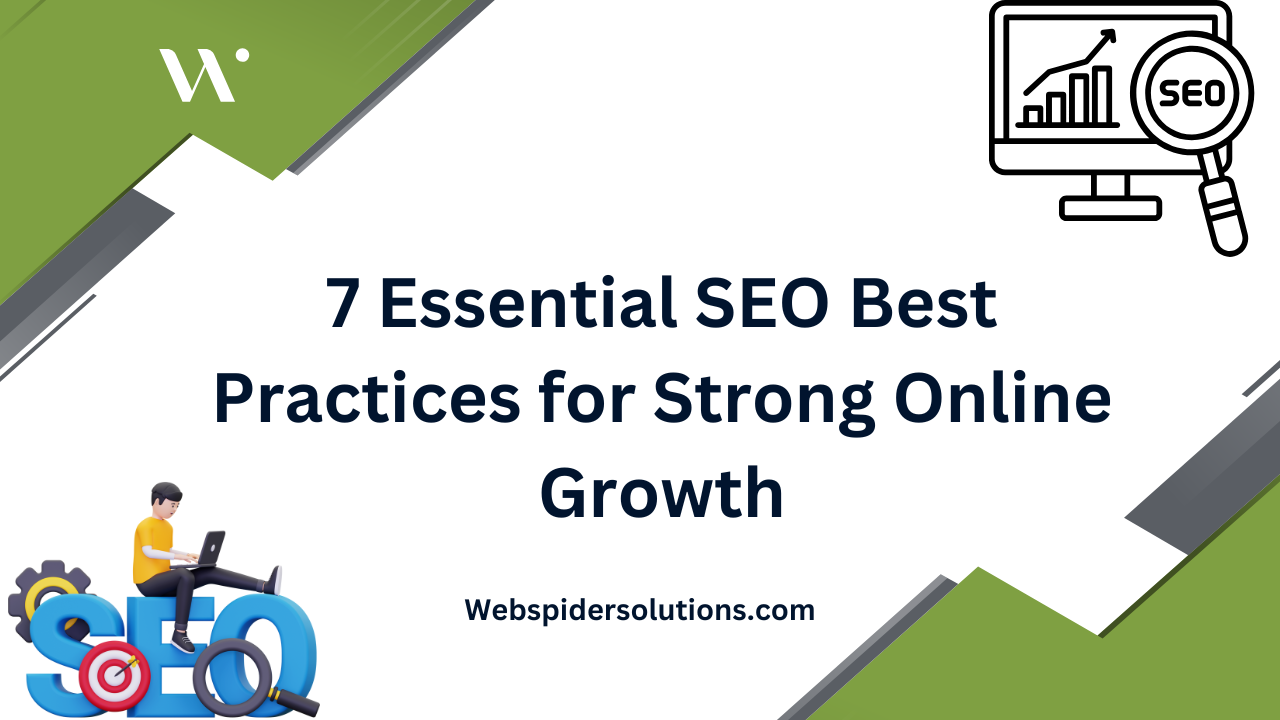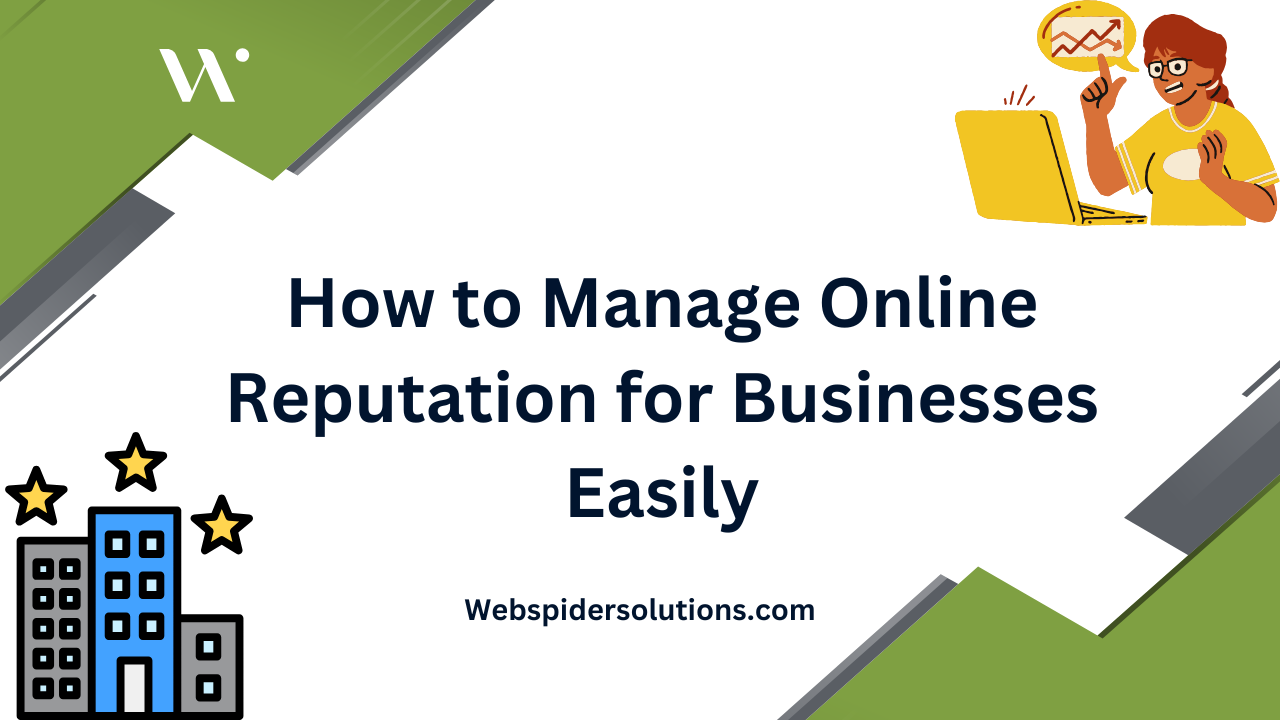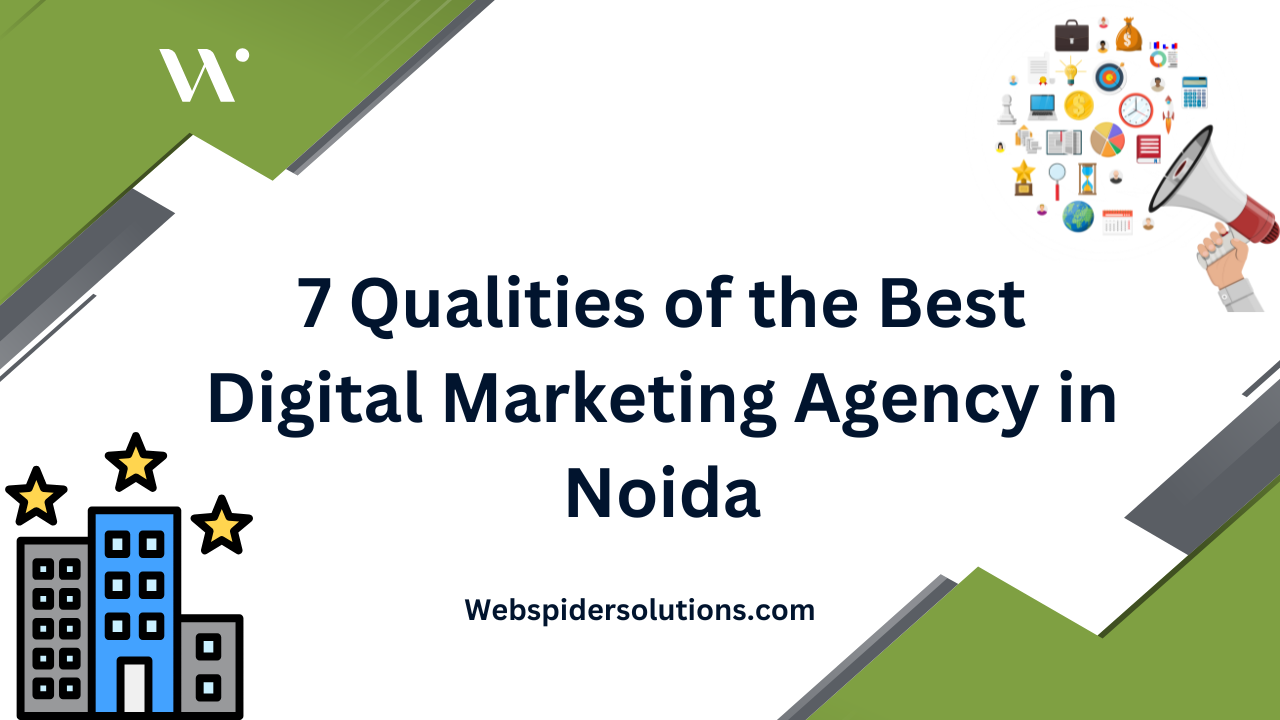Marketing an app is more competitive than ever and success hinges on knowing exactly who you are targeting. Some people waste thousands hoping the right users will stumble upon their app. But apps that thrive are built on data, not luck. The smartest teams pour hours into user research and competitive analysis before even thinking about ads or social media. What they learn changes everything.
Table of Contents
- Step 1: Identify Your Target Audience And Their Needs
- Step 2: Conduct Competitive Analysis To Find Opportunities
- Step 3: Optimize Your App Store Listing For Visibility
- Step 4: Implement Multi-Channel Marketing Campaigns
- Step 5: Monitor Performance Metrics And Adjust Strategies
Quick Summary
| Key Point | Explanation |
|---|---|
| 1. Identify Your Target Audience | Know your ideal users’ demographics and psychographics to tailor marketing strategies effectively. |
| 2. Conduct Thorough Competitive Analysis | Analyze competitors’ strengths and weaknesses to find opportunities for differentiation and positioning. |
| 3. Optimize App Store Listing | Use SEO techniques to improve visibility, using engaging visuals and persuasive descriptions to attract downloads. |
| 4. Implement Multi-Channel Marketing | Reach potential users across various platforms with cohesive messaging for broader exposure. |
| 5. Monitor and Adjust Marketing Strategies | Regularly analyze performance metrics to refine approaches and optimize user engagement and conversion rates. |
Step 1: Identify Your Target Audience and Their Needs
Successful app marketing begins with understanding exactly who will use your application. This critical first step helps you design targeted strategies that resonate with potential users, ensuring your marketing efforts are precise and effective.
To identify your target audience, start by analyzing demographic and psychographic characteristics that define your ideal user. Consider age range, professional background, income level, technological proficiency, and specific pain points your app aims to solve. Market research becomes your most valuable tool in this process.
Begin by conducting comprehensive user research through multiple channels. Surveys, focus groups, and online research platforms can provide deep insights into user preferences and behaviors. Learn more about audience targeting strategies to refine your approach. Look beyond basic demographics and explore user motivations, challenges, and expectations from applications in your specific domain.
Utilize analytics tools and market research platforms to gather quantitative data about potential user segments. Google Analytics, social media insights, and app store analytics can reveal critical information about user behaviors, interests, and engagement patterns. Pay attention to metrics like user age distribution, geographic location, device preferences, and interaction times.
Create detailed user personas that represent different segments of your potential audience. These personas should include realistic representations of your ideal users, complete with names, backgrounds, professional contexts, technological comfort levels, and specific challenges they face. By developing these personas, you transform abstract demographic data into relatable profiles that guide your marketing and development strategies.
Validate your audience understanding through continuous feedback mechanisms. Beta testing, user interviews, and early adopter programs can help confirm your initial research and provide nuanced insights that quantitative data might miss. Remember that audience identification is an ongoing process requiring regular refinement and adaptation.
Key verification indicators that you have successfully completed this step include:

- A comprehensive user persona document
- Clear understanding of user demographics and psychographics
- Identified primary user motivations and potential app usage scenarios
- Preliminary market segmentation strategy
By meticulously identifying your target audience, you establish a strong foundation for all subsequent app marketing strategies, ensuring your efforts are precisely targeted and highly effective.
Step 2: Conduct Competitive Analysis to Find Opportunities
Competitive analysis transforms your app marketing strategy from guesswork to precision. This critical step helps you understand the competitive landscape, revealing gaps in the market and opportunities for strategic differentiation. By thoroughly examining your competitors, you gain insights that can dramatically improve your app’s positioning and marketing approach.
Start by identifying direct and indirect competitors in your app’s specific category. Use app store searches, market research platforms, and industry directories to compile a comprehensive list of applications offering similar functionalities. Explore our guide on competitive analysis techniques to refine your research methodology. Focus not just on competitors with identical features, but also those solving similar user problems through alternative approaches.
Deep dive into competitor app store listings, analyzing their download numbers, user ratings, review comments, and feature sets. Examine their marketing strategies by reviewing their website, social media presence, and promotional materials. Pay special attention to how they communicate their unique value proposition and engage with their user base.
Utilize specialized competitive analysis tools like App Annie, Sensor Tower, or Mobile Action to gather quantitative data about competitor performance. These platforms provide detailed insights into download trends, user engagement metrics, keyword rankings, and user review sentiments. Analyze their user acquisition strategies, advertising spend, and organic growth patterns to identify potential marketing opportunities.
Critically evaluate the strengths and weaknesses of competing applications. Look for unmet user needs, feature gaps, or user experience limitations that your app could potentially address. User reviews are particularly valuable, offering unfiltered feedback about what users appreciate or find frustrating in existing solutions.
Document your competitive analysis findings systematically. Create a comprehensive comparison matrix that highlights key attributes such as:
- Feature comparison
- Pricing strategies
- User experience ratings
- Marketing channel effectiveness
- Geographical market penetration
Key verification indicators that you have successfully completed this step include:
- A detailed competitive analysis report
- Identified unique value propositions
- Clear understanding of market positioning opportunities
- Preliminary differentiation strategy
Remember that competitive analysis is not about copying competitors, but understanding the market landscape to create a more targeted, innovative app marketing approach.
Step 3: Optimize Your App Store Listing for Visibility
App store optimization transforms your digital storefront into a powerful user acquisition tool. This critical step determines how easily potential users discover and decide to download your application. Strategic optimization increases visibility, improves conversion rates, and sets the foundation for successful app marketing.
Begin by conducting comprehensive keyword research specific to your app’s category and target audience. Learn more about our app marketing optimization techniques to refine your approach. Identify search terms potential users might employ when seeking solutions like your app. Use keyword research tools such as App Annie, Sensor Tower, or App Tweak to uncover high-volume, relevant search terms with moderate competition.
Craft a compelling app title and subtitle that balance searchability with user appeal. Your title should include primary keywords while clearly communicating your app’s core value proposition. Avoid keyword stuffing, which can make your listing appear spammy and reduce credibility. Focus on creating a concise, memorable name that resonates with your target audience.
Design visually engaging screenshots and preview videos that immediately communicate your app’s unique features and user experience. The first few visual assets are crucial in capturing user attention and encouraging downloads. Ensure these visuals are high-quality, professionally designed, and showcase the most compelling aspects of your application. Demonstrate real-world usage scenarios that help potential users understand how your app solves their specific problems.
Write a clear, persuasive app description that combines strategic keyword placement with genuine user value communication. Break down complex features into easy-to-understand benefits. Highlight what makes your app unique compared to competitors. Use the first few lines strategically, as they are visible without requiring users to expand the full description.
Optimize technical metadata to improve discoverability. Select the most appropriate app category, ensure accurate tags, and provide comprehensive information about device compatibility, age ratings, and supported languages. These details help app stores match your application with the most relevant user searches.
Key verification indicators that you have successfully completed this step include:
- Keyword-optimized app title and subtitle
- High-quality, explanatory screenshots and preview videos
- Comprehensive, benefit-focused app description
- Accurate app store metadata and categorization
Remember that app store optimization is an iterative process. Continuously monitor performance metrics, gather user feedback, and be prepared to refine your listing based on real-world user interactions and search trends.
Step 4: Implement Multi-Channel Marketing Campaigns
Multi-channel marketing transforms your app’s visibility by creating a synchronized promotional ecosystem. This strategic approach ensures your application reaches potential users through diverse platforms, maximizing exposure and engagement opportunities. Learn more about cross-channel marketing techniques to amplify your promotional efforts.
Begin by identifying the most relevant marketing channels for your specific app and target audience. Social media platforms, search engine marketing, content marketing, email campaigns, and influencer partnerships each offer unique advantages. Prioritize channels where your potential users are most active and receptive. For instance, a productivity app might find more traction on LinkedIn, while a gaming application could excel on Instagram and YouTube.
The following table compares common marketing channels mentioned, outlining their advantages and best-fit scenarios to help choose the most effective mix for your app.
| Marketing Channel | Key Advantages | Best For |
|---|---|---|
| Social Media | Broad reach, engagement, visuals | Consumer-focused apps, products targeting younger audiences |
| Search Engine Marketing | High intent, measurable ROI | Apps needing immediate user acquisition, competitive keywords |
| Content Marketing | Authority building, organic traction | Solutions with educational value, long-term engagement |
| Email Campaigns | Direct communication, personalization | User retention, updates, onboarding sequences |
| Influencer Partnerships | Trust, niche reach, viral potential | Lifestyle, gaming, or creative apps with shareable elements |
Develop consistent messaging and visual branding across all selected channels. Your promotional content should maintain a cohesive narrative that reinforces your app’s core value proposition. Create adaptable marketing assets that can be slightly modified to suit each platform’s specific requirements while preserving your core brand identity. This approach ensures users receive a unified message regardless of where they encounter your promotional content.
Utilize targeted advertising strategies to maximize reach and efficiency. Platforms like Google Ads, Facebook Ads, and Apple Search Ads offer sophisticated targeting options allowing you to pinpoint users based on demographics, interests, and behaviors. Craft compelling ad copy that speaks directly to user pain points and highlights your app’s unique solutions. Implement retargeting campaigns to re-engage users who have shown initial interest but haven’t completed a download.
Leverage content marketing to establish credibility and provide value beyond direct promotion. Create blog posts, tutorial videos, infographics, and podcasts that demonstrate your app’s capabilities and address user challenges. This approach positions your application as a thought leader while organically attracting potential users through valuable, informative content.
Key verification indicators that you have successfully completed this step include:
- Comprehensive multi-channel marketing strategy document
- Consistent branding across all promotional platforms
- Targeted advertising campaigns with clear performance metrics
- Engaging content marketing assets
- Established tracking and analytics for campaign performance
Remember that multi-channel marketing is an ongoing process. Continuously monitor campaign performance, analyze user engagement metrics, and be prepared to adjust your strategy based on real-world results and emerging market trends.

Step 5: Monitor Performance Metrics and Adjust Strategies
Performance monitoring transforms raw data into strategic insights, enabling continuous improvement of your app marketing approach. This critical step helps you understand what’s working, what needs adjustment, and how to optimize your marketing investments for maximum impact. Explore our guide on building effective marketing strategies to enhance your analytical approach.
Establish a comprehensive tracking system using robust analytics platforms like Google Analytics, Firebase, Mixpanel, and app store native analytics tools. These platforms provide granular insights into user acquisition, engagement, retention, and conversion metrics. Focus on key performance indicators that directly reflect your marketing objectives, such as download rates, user activation percentages, session durations, and in-app conversion rates.
Develop a systematic approach to data interpretation and strategy refinement. Create a regular performance review schedule, ideally weekly or bi-weekly, where you analyze collected metrics against your initial marketing goals. Look beyond surface-level numbers to understand user behavior patterns, identifying specific points in the user journey where potential users drop off or become most engaged.
Implement advanced segmentation techniques to gain deeper understanding of different user groups. Break down your analytics by demographic characteristics, user acquisition channels, geographic locations, and behavioral patterns. This nuanced approach reveals which marketing strategies are most effective for specific audience segments, allowing for more targeted and personalized marketing efforts.
Establish a proactive optimization framework that allows rapid strategy adjustments. When certain marketing channels or campaigns underperform, be prepared to reallocate resources quickly. This might involve pausing underperforming ads, shifting budget to more effective channels, or redesigning marketing creative based on user engagement data.
Key verification indicators that you have successfully completed this step include:
- Comprehensive analytics dashboard with tracked performance metrics
- Regular performance review documentation
- Identified optimization opportunities
- Implemented strategy adjustments based on data insights
- Clear correlation between marketing efforts and app growth metrics
Remember that metric monitoring is not a one-time task but an ongoing process of continuous learning and adaptation. Successful app marketing requires persistent analysis, willingness to experiment, and data-driven decision-making.
Here is a checklist summarizing the key verification steps to confirm each stage of your app marketing strategy is complete.
| Step | Verification Indicators |
|---|---|
| Identify Target Audience | User persona document, clear demographics and psychographics, motivations and usage scenarios, initial market segmentation |
| Conduct Competitive Analysis | Detailed competitive analysis report, unique value propositions, understanding of positioning opportunities, draft differentiation strategy |
| Optimize App Store Listing | Keyword-optimized title/subtitle, high-quality visuals, benefit-focused description, accurate metadata and categorization |
| Multi-Channel Campaigns | Multi-channel strategy document, consistent branding, targeted ad campaigns, content assets, analytics setup |
| Monitor & Adjust Strategies | Analytics dashboard, performance review documentation, documented optimization opportunities, executed strategy adjustments, app growth metrics linkage |
Transform Your App Marketing into Real Business Growth
You have invested in understanding your audience, analyzing competitors, and optimizing your app store listing, but the true challenge is standing out and driving measurable growth in such a crowded market. Many businesses struggle to turn user insights, multi-channel campaigns, and performance metrics into a winning app marketing strategy that delivers real revenue and sustainable engagement. Without expert support, the process can quickly become overwhelming and time-consuming.
Web Spider Solutions is your partner for tailored app marketing solutions and long-term digital success. Our team applies proven strategies across paid advertising, app store optimization, and analytics-driven campaign management, ensuring your app is discovered, downloaded, and loved by your target users. Are you ready to elevate your app and see real results? Visit Web Spider Solutions today and request your personalized strategy session. Start taking control of your app’s growth right now to ensure your business never misses an opportunity to outperform competitors.
Frequently Asked Questions
How do I identify my target audience for app marketing?
To identify your target audience, begin by analyzing demographic characteristics such as age, income level, and job background. Conduct user research through surveys and analytics tools to define your ideal users and their specific pain points. Create detailed user personas to guide your marketing strategy.
What steps can I take to optimize my app store listing?
Start by conducting keyword research to find relevant terms your potential users might search for. Craft an engaging app title and subtitle, and use high-quality visuals and a clear app description that emphasizes user benefits. Continuously refine your app store metadata to improve discoverability and conversion rates.
How can competitive analysis improve my app marketing strategy?
Conducting competitive analysis helps you understand the strengths and weaknesses of other apps in your market. Identify gaps where your app can differentiate itself and document findings in a comparison matrix. Use this information to develop unique value propositions that appeal to your target users.
What are the best channels for a multi-channel marketing campaign?
Identify channels that are most relevant to your audience, such as social media, email marketing, and influencer partnerships. Develop consistent messaging across these platforms to create a cohesiveness. Track performance metrics to see which channels yield the highest user engagement and adjust your focus accordingly.
How should I monitor performance metrics for my app marketing efforts?
Establish a comprehensive tracking system using analytics platforms to gain insights into user behaviors and marketing effectiveness. Focus on key performance indicators like download rates and session durations, and conduct performance reviews regularly. Adjust your strategies based on user engagement data to optimize overall effectiveness.
How long does it take to see results from my app marketing strategies?
Results from effective app marketing strategies can typically be seen within 30 to 60 days. Focus on implementing multi-channel campaigns and optimizing your app store listing, as these efforts will drive user engagement and downloads faster. Regularly analyze performance metrics during this period for immediate insights.
Recommended











